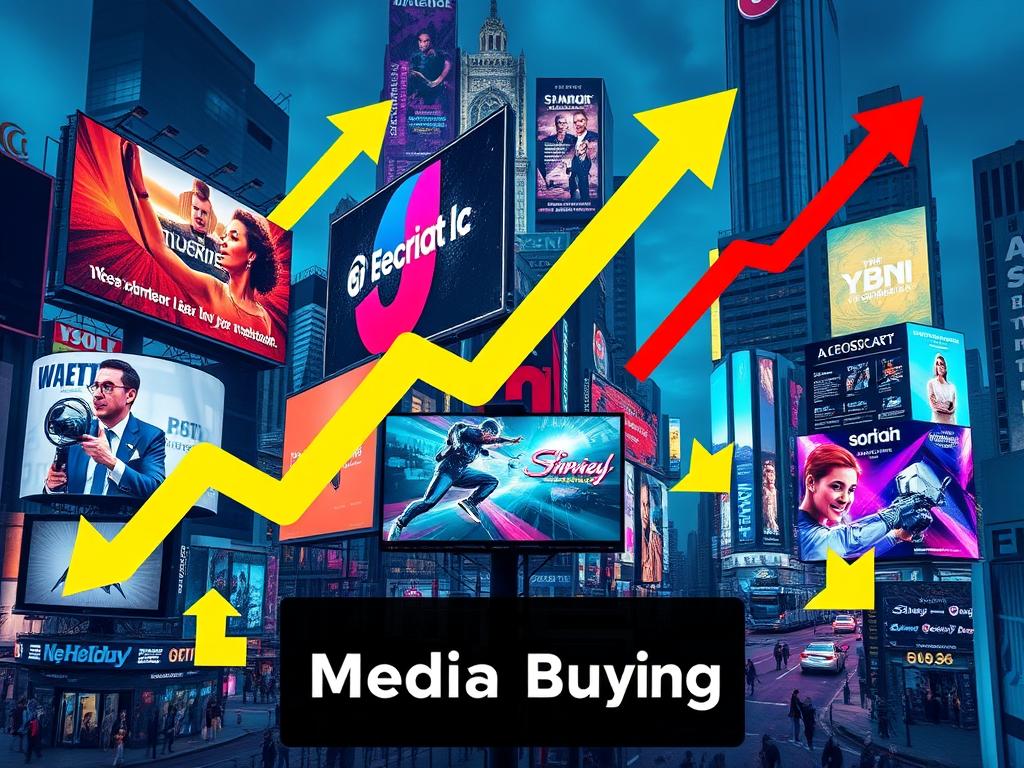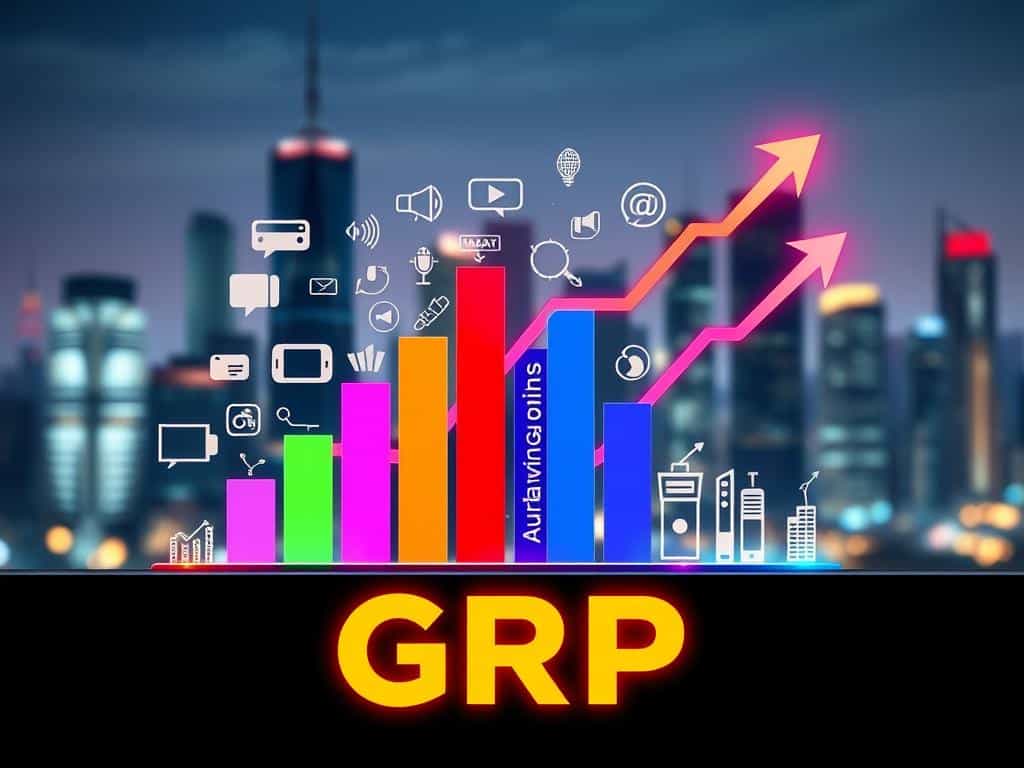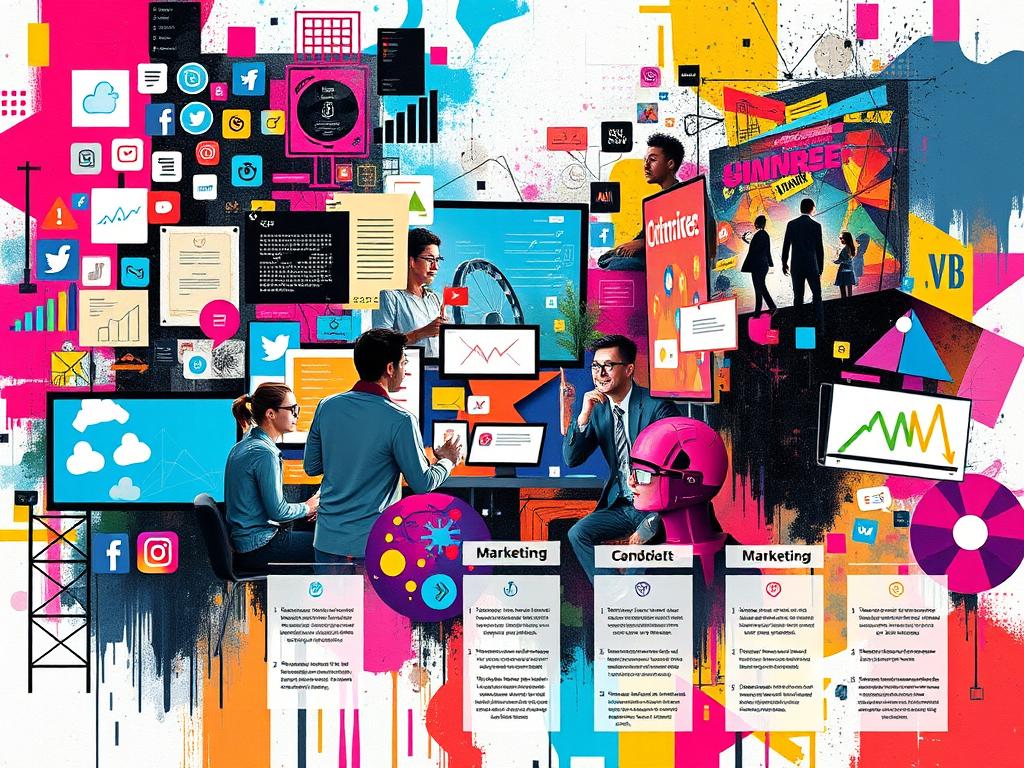When looking to buy advertising space, understanding the media buying process is crucial. This involves several steps, all of which are designed to ensure that your ad placement strategies align with your marketing objectives.
Starting with a strategic plan, identify the best web pages and ad formats that fit your goals. For instance, programmatic buys can allow for AI-enabled real-time bidding on ad space, matching consumer profiles efficiently. Alternatively, you might consider direct buys, which entail negotiating ad rates and run times directly with specific advertisers. Media buyers typically purchase advertising space at “net” prices, saving roughly 15% compared to “gross” prices, enhancing budget effectiveness in the purchasing ad inventory.
Leveraging relationships with media owners, media buyers can ensure impactful placements with less investment. Proactive monitoring and adjustments during campaigns also help optimize outcomes. For smaller budgets, options like Microsoft bCentral’s LinkExchange Banner Network offer affordable banner ad buys under $1,000, while CPC models charge around 55 to 65 cents per click-through, providing cost-control measures. Understanding these various options can significantly influence your success in purchasing ad inventory.
Understanding Media Buying: Definition and Importance
Media buying is a critical element of any advertising campaign strategy, enabling brands to place their messages effectively for maximum reach and impact. This process involves skillful negotiation and strategic planning to purchase advertising spaces across various media platforms. Analyzing audience demographics, selecting the right broadcast medium, and budget allocation are fundamental in this phase of media buying.

Effective media buying requires a deep understanding of the media purchase importance. Proper execution can significantly enhance the Return on Investment (ROI) for businesses, making it an economical advertising strategy. With the rise of digital marketing, advertisers now have a spectrum of platforms and channels to choose from, each with distinct advantages.
A comprehensive understanding of research and analyzing media channels is paramount in today’s digital environment. This ensures your advertising campaign strategy is data-driven and precisely targeted, enabling you to engage with the right audience. Evaluating key factors such as reach, relevance, audience engagement, cost, and monitoring competitor actions are indispensable steps in this process.
The selection of a suitable broadcast medium—whether traditional or digital—plays a crucial role in the success of an advertising campaign. Personal relationships with media planners and channel owners can often lead to favorable placements and timing, further optimizing the effectiveness of media buys. Additionally, staying updated on market trends and changes is vital to ensure your chosen advertising venues remain relevant and effective.
| Media Buying Factors | Impact |
|---|---|
| Audience Demographics | Identifies the optimal venues to reach the target audience |
| Budget Allocation | Influences the extent of market reach, whether local, regional, or national |
| Media Channel Selection | Determines the efficiency of the advertising campaign strategy |
| Market Segmentation | Enhances precise targeting and engagement with specific audience segments |
| Competitor Monitoring | Helps in adjusting strategies to stay ahead and relevant |
| Programmatic Advertising | Utilizes real-time algorithm-based ad purchasing for increased efficiency |
In conclusion, the significance of media buying extends beyond simple ad placements; it’s about maximizing campaign efficiency and ensuring the brand’s message reaches the intended audience effectively.
The Stages of Media Buying
Understanding the stages of media buying is crucial for executing successful advertising campaigns. Each stage, from media plan development to assessing campaign outcomes, plays a pivotal role in ensuring that your marketing initiatives achieve their intended impact.
Preparing a Media Plan
Media plan development begins with researching the market to understand your target audience. This involves setting objectives, determining campaign duration, and establishing a budget. The initial media plan acts as a roadmap, guiding you through the media buying process while outlining strategies and marketing goals. Media planners focus on finding the most effective channels to reach potential customers, leveraging tools like Nielsen and Comscore to gather valuable insights.
Executing the Media Purchase
Once your media plan is ready, the next step is advertising space negotiation. Whether through traditional methods like direct media buying or modern approaches such as programmatic buying, securing the best ad placements at optimal prices is essential. Media buyers often negotiate with networks, websites, and other media channels to acquire inventory slots. This stage may involve sending out Requests for Proposals (RFPs) to gather information on availability, pricing, and other specifications.
Monitoring During the Campaign
During the campaign, continuous monitoring is necessary to ensure it runs smoothly and meets expectations. Adjustments based on real-time data are crucial, as they can enhance engagement and reach. Media buyers track campaign performance, analyzing metrics like impressions, clicks, and conversions. This allows for timely adjustments to optimize the campaign’s impact.
Evaluating After the Campaign
After the campaign concludes, conducting a thorough campaign impact analysis is essential. This involves collecting and reviewing data to evaluate the campaign’s effectiveness. Metrics such as customer engagement, return on investment (ROI), and overall impact on brand awareness are assessed. These insights help in refining future strategies, ensuring continuous improvement in your media buying efforts.
| Stage | Key Activities | Tools/Methods |
|---|---|---|
| Preparing a Media Plan | Market research, setting objectives, budget allocation | Nielsen, Comscore, AI-powered tools |
| Executing the Media Purchase | Advertising space negotiation, direct and programmatic buying | RFPs, real-time bidding platforms |
| Monitoring During the Campaign | Real-time performance tracking, adjustments | Analytics software, automated dashboards |
| Evaluating After the Campaign | Campaign impact analysis, ROI assessment | Evaluation reports, audience feedback |
By following these stages meticulously, your media buying process can greatly enhance your campaign’s success, ensuring effective audience targeting and impactful advertising.
Why Marketers Buy Advertising Space
Marketers invest in advertising spaces to boost their marketing campaign reach, amplify ad exposure enhancement, and drive digital advertising growth. By purchasing prime locations such as top banners, sidebars, and pop-ups across multiple platforms, they aim to engage a broader audience and maximize their returns on spending. Advertising spaces are pivotal in increasing visibility and driving conversions, including product views, direct purchases, and newsletter sign-ups.

The digital revolution has led to an explosion in the variety of ad formats and targeting options available. With global digital advertising spending hitting $522.5 billion in 2021 and projected to soar to $836 billion by 2026, marketers are increasingly shifting their budgets towards digital channels. Google’s dominance, holding 85.5% of the global desktop search market, underscores the importance of digital advertising in reaching potential customers.
- Approximately 28% of brands use blogs to promote products under their affiliate marketing strategy.
- Google Display Network reaches over 90% of Internet users, serving over a trillion impressions monthly.
Agencies play a crucial role in media buying and media planning, balancing creativity with client business needs to ensure the best return on ad spend. They analyze past performance data to strategize on the most effective channels and platforms. Additionally, agencies have the advantage of negotiating better rates by purchasing ad space in bulk and leveraging relationships with media outlets.
| Key Aspect | Benefits |
|---|---|
| Media Planning | Defining goals, understanding the audience, selecting channels, and building effective media plans |
| Media Buying | Securing premium ad spaces on digital and traditional platforms, optimizing ad exposure enhancement |
| Performance Analysis | Monitoring campaign success, tracking audience responses, and adjusting strategy as needed |
Developing strong client relationships and staying ahead of emerging trends also provide agencies with unique advantages. By adopting new technologies and innovative features, agencies can push the boundaries of advertising creativity and drive revenue growth. This dynamic capability ensures that campaigns remain relevant and effective, continually contributing to digital advertising growth.
Types of Advertising Spaces and Formats
When it comes to advertising, small businesses have a plethora of options to choose from. Companies must strategically select the appropriate ad formats to best engage their target audience. These formats can primarily be categorized into two types: digital advertising and traditional advertising.
Digital Advertising
Digital advertising has transformed the way businesses reach audiences, including a variety of versatile and customizable ad formats.
- Banner Ads: Highly visible and commonly found across websites, banner ads are a staple in online advertising.
- Video Ads: A compelling choice, video ads capture attention and convey messages dynamically on platforms like YouTube and Facebook.
- Native Ads: Seamlessly integrate into content feeds on social media platforms such as LinkedIn, providing a non-disruptive user experience while promoting brands.
Platforms like Facebook, Instagram, and LinkedIn provide extensive reach. For instance, around 70 percent of American adults use Facebook, making it a low-cost option for businesses. On the other hand, video ads on Instagram, with its billion-user base, predominantly attract audiences under 30, making it a perfect match for visually driven campaigns. LinkedIn, featuring over 560 million professional users, offers an excellent venue for B2B marketing using native ads. Furthermore, businesses generate an average of $2 for every $1 spent on Google Ads, making pay-per-click advertising a cost-effective strategy.
Traditional Advertising
Traditional media advertising continues to be relevant, providing time-tested methods to engage with broader audiences.
- Print Advertising: Including magazines and newspapers, print ads offer a tactile experience but come with high costs and challenges in tracking effectiveness.
- Broadcast Advertising: Encompassing ads on TV and radio, this form can be pricey but highly effective for local campaigns via local stations.
- Out-of-Home Advertising: Billboards, digital signage, and transit ads fall into this category. Although expensive, these ads provide high visibility in busy locations.
- Direct Mail Advertising: Sending catalogs or postcards directly to customers can create personalized experiences, particularly successful when designed creatively.
More than 84 percent of adult consumers under 30 prefer online shopping through mobile devices, highlighting the importance of mobile advertising. While print advertising costs can be significant, digital methods offer detailed reporting, allowing for better performance tracking. Broadcasting, though potentially costly, can be leveraged affordably on local TV and radio. Out-of-home placements like billboards may involve steep expenses but ensure high visibility.
For further insights on the various types of advertising spaces and formats, visit this comprehensive guide on types of advertising.
How Do Clean Rooms Impact the Process of Buying Advertising Space?
Clean rooms are revolutionizing how advertisers collaborate and analyze data. They enable privacy-safe access to aggregated insights, ensuring better-targeted campaigns. Clean rooms advertising explained benefits buyers by offering transparency and efficiency, fostering trust between parties. This enhances decision-making processes when purchasing advertising space, driving optimized results for brands and agencies alike.
How To Buy Advertising Space Directly
Buying advertising space directly from publishers offers numerous direct ad purchase benefits. Not only does it eliminate intermediary fees, but it also grants you complete control over your advertising campaigns. When you choose this route, you can create customized partnerships and tailor your ad campaigns to cater to specific audience segments. To begin, you’ll need to identify and connect with platform owners who align with your niche and values. Understanding the potential of their ad space is crucial for effective ad placement strategy.
One of the critical steps in direct ad purchases is negotiating with platform owners. This entails discussing pricing, ad formats, and contract terms that benefit both parties. Aspiring for a collaborative relationship can lead to long-term partnerships that provide better insights and enhanced ad performance metrics. Aim to work with publishers who boast content-rich websites with at least 20 to 30 pages, ensuring they attract advertisers and maintain a loyal audience base.
The success of direct ad purchases can be further optimized by employing real-time data monitoring and adjusting your strategies accordingly. Programmatic advertising offers such flexibility and efficiency, streamlining the entire process. Publishers applying for Google AdSense should attract around 250 unique visitors daily, with a significant portion of their traffic originating from the United States, United Kingdom, Canada, Australia, and Europe. This ensures a broad and desirable reach for your ads, enhancing your return on investment through highly targeted and relevant content. Engaging directly with publishers allows for personalized, adaptable campaigns that generate impressive results.








